| Pre-1909 (source) |
The site was initially developed for residential use and partially used for tricycle manufacturing |
| 1911 |
Buffalo Homeopathic [pronounced ho me oh PATHIC] Hospital Built
|
| George Newton (source) |
Buffalo Homeopathic Hospital Architect
|
| 1923 |
Name change: Millard Fillmore Hospital |
| 1941 |
Center building |
| 2010 |
Kaleida Health owners consolidated operations at Buffalo General Hospital
|
| October 3, 2015 |
Year Gates Vascular Institute and the hospital was demolished by implosion |
|
In the early 1800’s, physicians were not required to have an M.D. degree or to be registered to practice. Many “cures” were worse than the disease. The harsh treatments used by orthodox physicians, including noxious medicines, bleeding, purging, blistering and “other severe therapies”, prompted many patients to seek other, gentler treatments for their diseases, and they turned to homeopathy [pronounced ho me OP a thee; the treatment of disease by minute doses of natural substances that in a healthy person would produce symptoms of disease]. During the mid-1800’s, large numbers of Buffalonians followed the trend, and homeopathic physician Dr. Augustus Hoxsie became one of the area’s most successful practitioners. But neither of the two hospitals in the city accepted homeopathic practitioners. Determined to establish a hospital where her husband could treat his patients, Mrs. Hoxsie gathered a group of like-minded women in June 1872. They formed the Homeopathic Hospital Aid Association, and taking the first step toward establishing a homeopathic institution, raised $4,500 through a bazaar. With an additional $500 raised by offering memberships in the Association, a modest three story house at the corner of Washington and North Division Sts. was rented, equipment purchased, and the Buffalo Homeopathic Hospital opened in October of that same year. Within two years, increasing demand forced a move to larger quarters, and the hospital purchased the Bidwell family homestead at 74 Cottage St., the corner of Maryland St. With the acquisition of two adjoining cottages and a two-story addition, capacity increased to 46 patients. Demand for homeopathic care continued, and the tiny hospital became busier and busier. By the turn of the century, new quarters were being sought, and in 1908, a separate corporation was established specifically to purchase land on Gates Circle. A modern hospital was built on the site, and the Buffalo Homeopathic Hospital’s new, larger quarters opened in June, 1911. The new building, facing Lafayette and Linwood Avenues, and with its northeast corner on Gates Circle, could accommodate 150 patients. On December 3, 1923 to honor the memory of Buffalo’s most distinguished citizen, the hospital changed its name to the Millard Fillmore Hospital and Buffalo’s Homeopathic Hospital changed its policy, for the first time since its founding, practitioners of traditional medicine were welcomed. |
Throughout the 1800’s, both allopathic (conventional or modern medical doctors) and homeopathic physicians, treated diseases such as small pox, typhoid, diphtheria, tuberculosis and syphilis as well as illnesses more common today such as influenza, allergies, and menstrual disorders. At that time, allopaths had nothing more than purging and other primitive means to treat these diseases. The homeopaths, however, had an arsenal of remedies as effective today as they were then. In the nineteenth century a fever of 105� was given precisely the same homeopathic treatment as today. In fact, most homeopaths prize their texts by the masters of infectious diseases as a mainstay of their library. Nothing in homeopathy is capricious. Indeed every remedy has been used efficaciously for over two centuries. In Buffalo, homeopathy first found its home at Washington and North Division streets as the Buffalo Homeopathic Hospital, incorporated in June 1872. The purchase price of the property was five thousand dollars. A group of devoted women who called themselves the Homeopathic Hospital Aid Association raised forty five thousand dollars with a bazaar and the balance from one-dollar memberships. In 1899 a free homeopathic dispensary opened at Genesee and Main streets as a branch of the Buffalo Homeopathic Hospital. It was about this time that changes in medicine came about. While education standards for homeopathy were higher and more demanding, allopathic medicine began using heroic measures such as antibiotics that appeared to act miraculously. This was particularly powerful because until that time the conventional physicians depended on bleeding, purging and blistering. Now the allopaths could offer seemingly painless methods to “cure”. The homeopathic physicians had always used only simple little pills and not surgical or heroic measures. Also homeopathic consultations then as now take a good amount of time, often as long as an hour and a half per visit. However, with allopathic treatments the cultural effects of the industrial revolution, the assembly-line mentality of getting the patient in and out within minutes became the norm in hospitals and doctors offices. Once the Buffalo Homeopathic Hospital established its new location at Gates Circle [1911] cultural and medical changes across the country encouraged the board of directors to include the hiring of allopathic doctors. In 1923, the name was changed to Millard Fillmore Hospital. This coincided with the beginning of the decline of the practice of homeopathy in Buffalo. Trade organizations including the American Medical Association soon became the norm in the United States. The American Medical Association was made up of a group of allopaths who were antagonistic to “sectarian” groups. Their attention was focused on the elimination of the homeopathic profession. This attitude coupled with practitioner attrition caused the practice of homeopathy to decline in the United States to essentially end around 1970. However starting in the late 1970s, there has been a sharp resurgence and homeopathy has continued to grow. Homeopathy is no longer found in Millard Fillmore Hospital. Indeed is likely that many of the hospital staff may not be aware of its meaning and the legacy of homeopathy as a healing art right in their own hospital. |
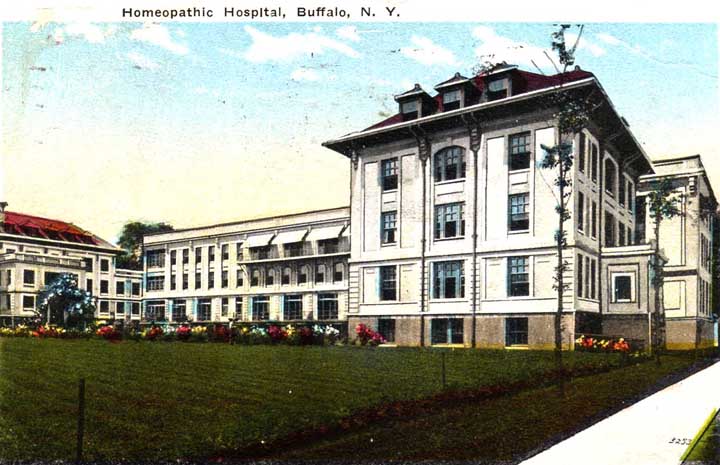 View from Linwood Avenue ... 1911 building  Historic courtyard of 1911 Buffalo Homeopathic Hospital, showing building campaigns from 1911-1958. Source: Barbara Campagna, BAC[A+P]: Millard Fillnore Hospital (online July 2017) 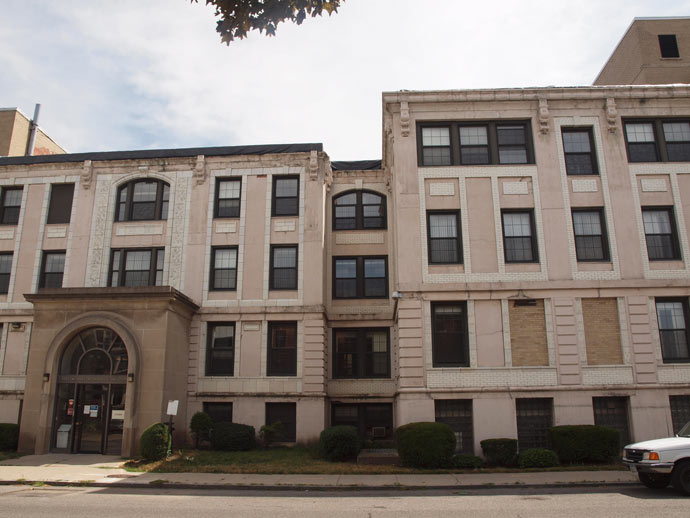 South facade, showing building campaigns from 1911-1928. Original entrance to hospital. Source: Barbara Campagna, BAC[A+P]: Millard Fillnore Hospital (online July 2017)  East facade, showing 1911 and 1928 building campaigns. Original Nurses' Residence. Source: Barbara Campagna, BAC[A+P]: Millard Fillnore Hospital (online July 2017) 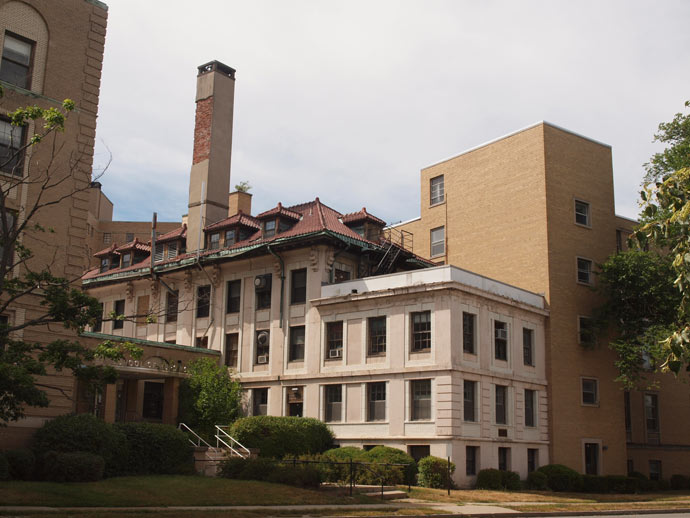 East facade, showing 1911 and 1928 building campaigns. Original Nurses' Residence. Source: Barbara Campagna, BAC[A+P]: Millard Fillnore Hospital (online July 2017)   Delaware Avenue (west elevation)  |
June 2017 Construction Photos - Lafayette Avenue 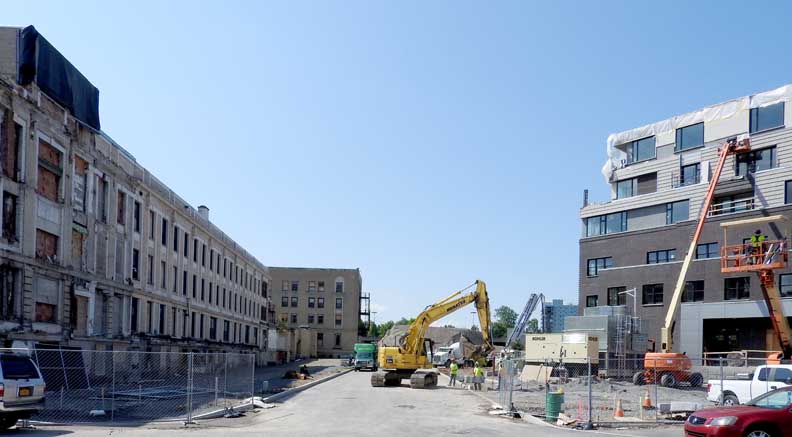 Lafayette Avenue: Left: Millard Fillmore Hospital partially demolished buildings ... Center: Lancaster Avenue extension ... Right: Canterbury Woods Gates Circle 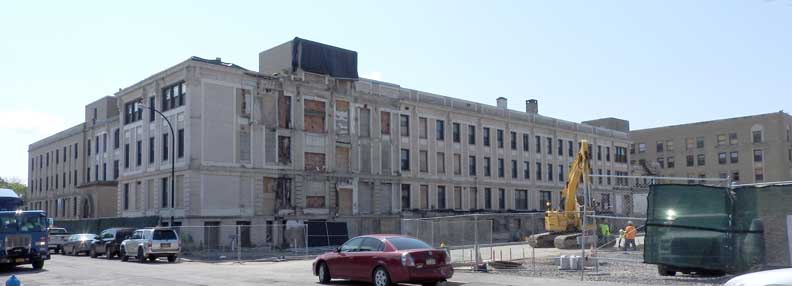 Millard Fillmore Hospital partially demolished buildings  1909 building ... Five details below: 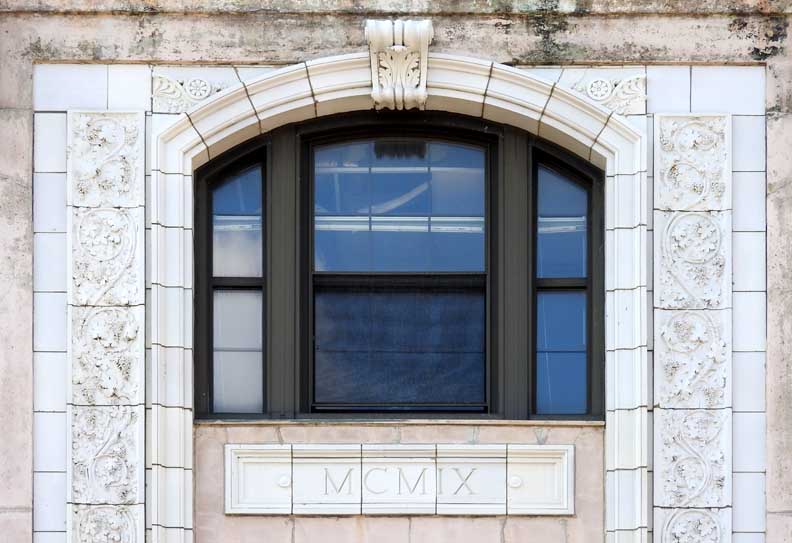 1909 building ... Detail #1 - Keystone in the shape of an ancone decorated with an acanthus leaf 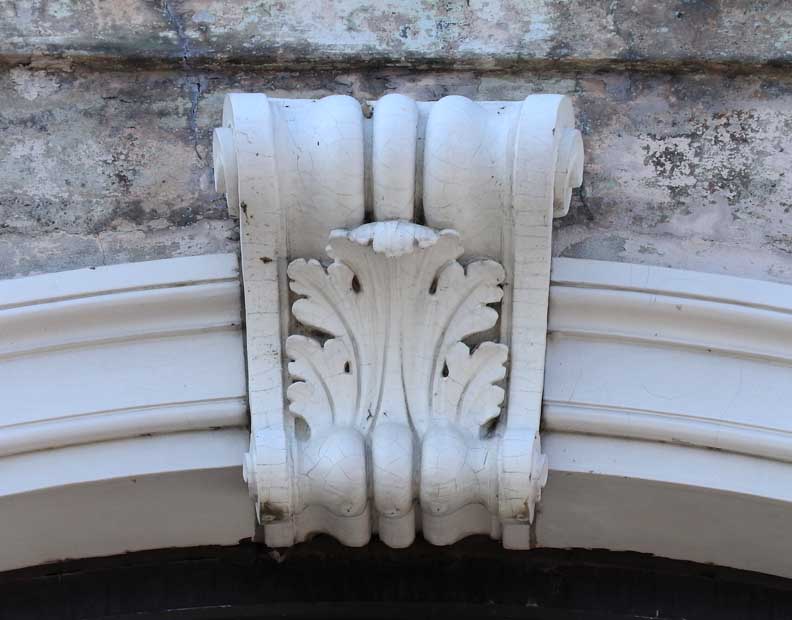 1909 building ... Detail 2 - Keystone in the shape of an ancone decorated with an acanthus leaf  1909 building ... Detail #3 M=1,000 CM=190 IX=9 Total: 1909 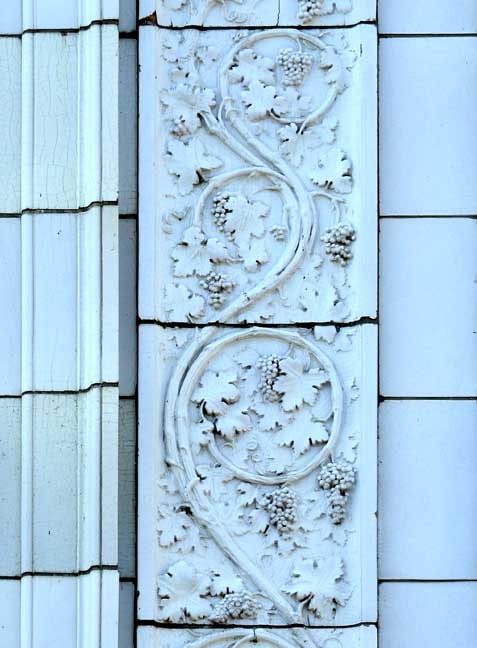 1909 building ... Detail #4: Grape vines 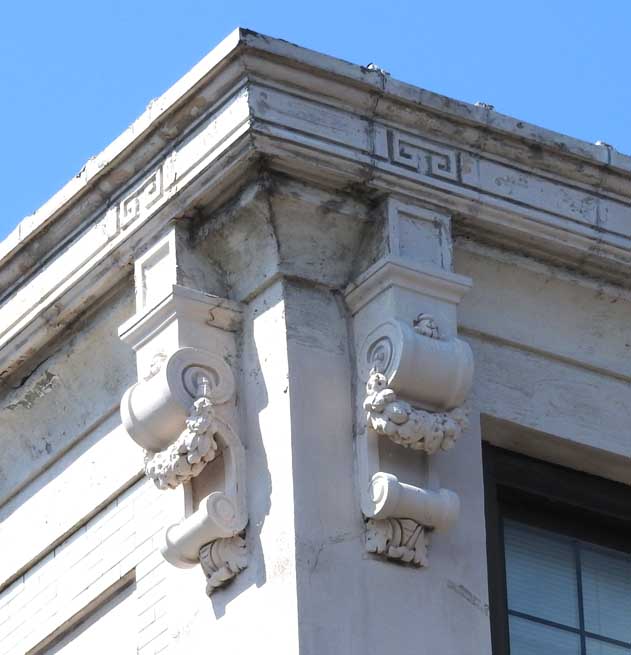 1909 building ... Detail #5 - Greek keys at top ... Scroll with festoon 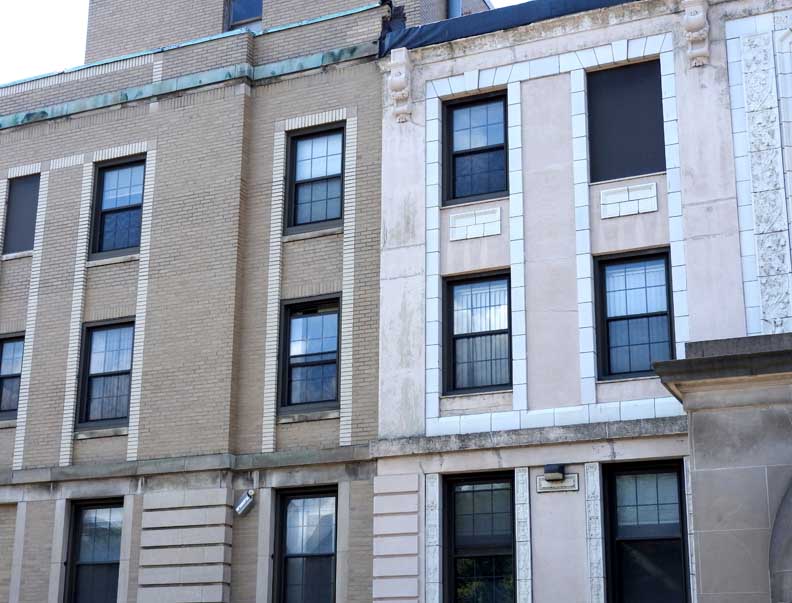 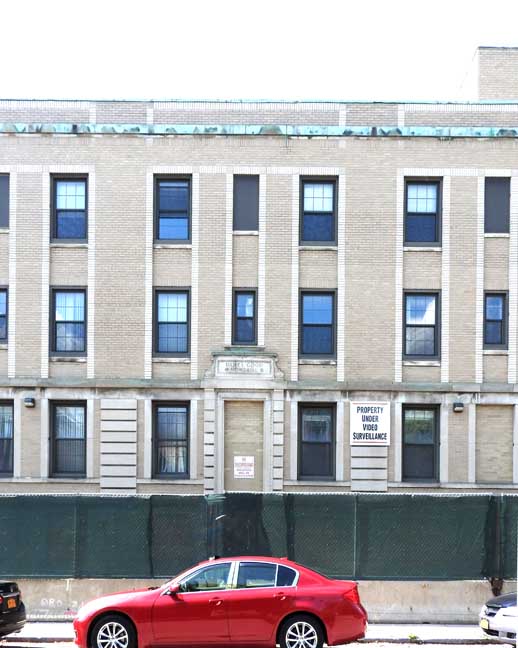 Detail below:  See also: Daniel Good bio 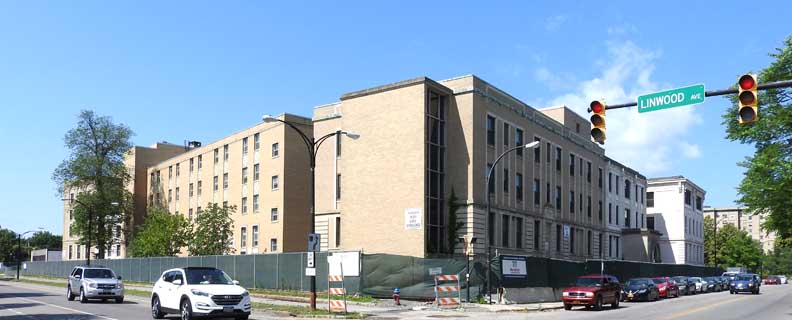 Left: East elevation (facing Linwood Avenue) ... North elevation (facing Lafayette Avenue) |